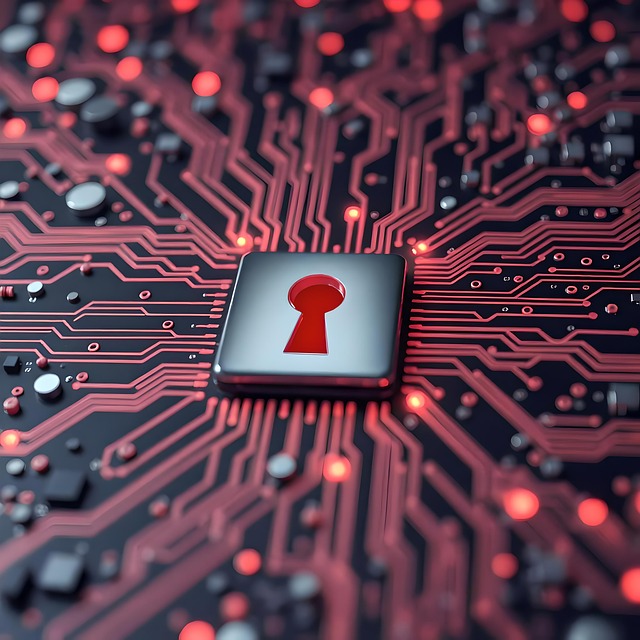In a constantly evolving digital landscape, safeguarding sensitive information has become a cornerstone of trust and resilience. Every transaction, every interaction, every stored datum carries inherent value, and its compromise can trigger cascading damages. Therefore, organizations and individuals alike must adopt a comprehensive shield built on proven data security techniques. By integrating technical controls, procedural safeguards, and cultural awareness, one can create a robust defense that withstands both known and emerging threats. This article explores the most effective strategies that form the foundation of modern protection efforts.
Encryption Techniques
Encryption remains the first line of defense against unauthorized disclosure. Symmetric algorithms such as AES‑256 offer high speed and strong confidentiality when keys are managed securely. For data in transit, TLS 1.3 establishes an encrypted channel that also authenticates endpoints, reducing man‑in‑the‑middle risks. Public‑key infrastructure, with RSA or ECC, enables secure key exchange and digital signatures, ensuring integrity and non‑repudiation. Hybrid schemes combine the performance of symmetric ciphers with the flexibility of asymmetric key distribution. Regularly rotating keys and applying proper key‑management practices safeguard against brute‑force attacks and credential theft.
Multi‑Factor Authentication
Multi‑factor authentication (MFA) adds an extra layer that requires more than one credential type. Typical configurations combine something you know (password), something you have (security token), and something you are (biometric). The adoption of time‑based one‑time passwords (TOTP) and hardware security modules (HSM) significantly reduces credential‑based compromises. Additionally, risk‑based authentication dynamically adjusts thresholds based on user behavior, device reputation, and location. When implemented correctly, MFA transforms a weak password into a resilient barrier that protects against credential stuffing, phishing, and account takeover attacks.
Secure Software Development Lifecycle
Secure software development lifecycle (SDLC) embeds security at every phase, from requirements to disposal. Threat modeling during the design stage surfaces potential attack vectors before code is written. Secure coding guidelines, such as OWASP Top 10 mitigations, reduce vulnerabilities like injection, cross‑site scripting, and insecure deserialization. Static and dynamic analysis tools automatically detect weaknesses, while automated unit tests enforce security assertions. Continuous integration pipelines enforce code reviews and dependency checks, ensuring that third‑party libraries remain free of known exploits. Proper sanitization, least‑privilege principle, and robust error handling further harden the application against runtime attacks.
Network Security Measures
Network perimeter protection is no longer limited to firewalls alone. Next‑generation firewalls (NGFW) inspect traffic at the application layer, blocking malicious payloads before they reach internal hosts. Intrusion detection and prevention systems (IDS/IPS) analyze packet flows in real time, identifying anomalous patterns and automatically enforcing countermeasures. Segmentation through virtual LANs (VLANs) isolates critical subnets, limiting lateral movement for attackers. Zero‑trust networking mandates continuous verification of user and device identities, employing micro‑segmentation and just‑in‑time access. Software‑defined networking (SD‑N) provides programmable control planes that enable dynamic policy enforcement across distributed environments.
Data Minimization and Anonymization
Collecting only the necessary data reduces exposure risk and simplifies compliance. Data minimization principles guide organizations to store the smallest set of personally identifiable information (PII) required for their purpose. When data must be retained, anonymization techniques such as k‑anonymity, differential privacy, or tokenization remove or mask identifying attributes while preserving analytical value. Pseudonymization, in contrast, replaces identifiers with pseudonyms that can be reversed only under strict controls, allowing selective re‑identification for legitimate purposes. Regular audits ensure that data retention schedules and access rights remain aligned with the minimization policy.
Incident Response and Recovery
Preparedness for a breach starts with a well‑documented incident response plan. The plan defines roles, communication channels, and escalation paths to ensure a swift reaction. Automated monitoring tools generate alerts for anomalous activities, feeding data into a security information and event management (SIEM) platform. Containment strategies isolate compromised segments, while forensic analysis reconstructs attack vectors and determines root causes. Post‑incident reviews capture lessons learned, updating defenses and policies accordingly. Regular tabletop exercises test coordination, revealing gaps before an actual event forces the organization into crisis mode.
Compliance and Governance
Regulatory frameworks such as GDPR, HIPAA, and CCPA set mandatory security controls and privacy obligations. Compliance requires a risk‑based approach, where organizations assess threats, vulnerabilities, and impact before assigning protective measures. Governance structures, including data protection officers and security steering committees, enforce accountability and ensure that security decisions align with business objectives. Periodic audits, penetration tests, and third‑party assessments provide objective evidence of adherence. Maintaining accurate documentation and evidence trails also supports legal defenses during investigations or regulatory inquiries.
Emerging Technologies
Artificial intelligence and machine learning enhance threat detection by identifying patterns that humans might miss. Behavioral analytics models learn normal user activity and flag deviations with high precision. Blockchain technology offers immutable audit trails, enabling transparent verification of data integrity. Homomorphic encryption allows computations on encrypted data, preserving confidentiality without decryption. Quantum‑resistant algorithms prepare infrastructures against future quantum computers capable of breaking classical public‑key schemes. Integrating these innovations into existing security stacks requires careful evaluation, standardization, and continuous monitoring to avoid introducing new attack surfaces.
Continuous Improvement
Security is an ongoing journey rather than a one‑time achievement. Continuous improvement cycles, such as Plan‑Do‑Check‑Act, enable organizations to adapt to evolving threat landscapes. Automated logging and analytics capture operational metrics, feeding dashboards that inform decision‑makers about vulnerability trends. Vulnerability management programs prioritize patches based on severity, asset criticality, and exposure risk. User training and awareness campaigns reinforce safe practices, reducing human‑error incidents. Finally, fostering a culture that rewards proactive security behaviors encourages employees to report suspicious activity early, thereby strengthening the organization’s collective defense posture.
Human Factors and Insider Threats
Even the most robust technical controls can be undermined by human behavior. Insider threats—whether malicious, negligent, or accidental—constitute a significant portion of data breaches. Implementing least‑privilege access, continuous monitoring of privileged accounts, and automated behavior analytics helps detect anomalous activity before it escalates. Security awareness training, tailored to job roles, educates staff on phishing, social engineering, and safe handling of sensitive data. Additionally, formalized incident reporting mechanisms reduce the likelihood that malicious insiders remain undetected. By fostering a transparent culture and providing clear channels for concerns, organizations can transform potential adversaries into allies who help maintain security integrity.
Data Disposal and Destruction
Proper data disposal prevents residual information from becoming a liability. Physical media such as hard drives, magnetic tapes, and backup CDs must be shredded, incinerated, or degaussed to ensure data is irretrievable. For digital assets, cryptographic erasure—overwriting data with random patterns or using secure delete utilities—guarantees that recovery tools cannot reconstruct the original content. Disposal schedules should align with legal retention mandates and industry best practices. Auditing the destruction process and maintaining chain‑of‑custody records provide verifiable evidence that data has been fully eliminated. Finally, organizations should incorporate disposal protocols into their overall data lifecycle strategy, ensuring that data is never left unmanaged beyond its intended use.

